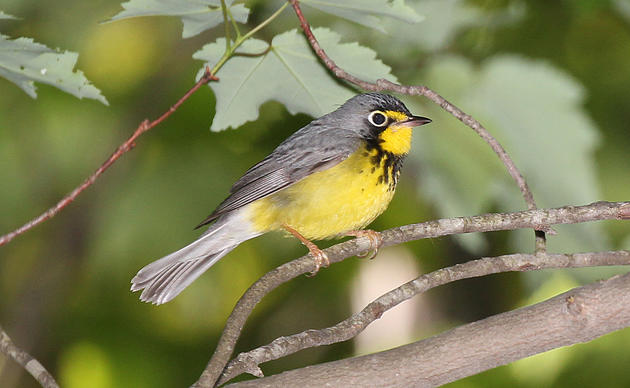Adirondack Forest Tract
Audubon New York works to protect and steward the rich and vast natural resources of New York State, including the Adirondacks -- one of the most beautiful, unique, and vibrant ecosystems in the world.
Through our habitat improvement program "Woods, Wildlife, and Warblers," we offer on-the-ground technical assistance, collaborative workshops, financial support, and connections to foresters, loggers, and family forest owners in the Adirondacks.
The Eastern Forest, including the Adirondacks, is a priority of the Working Lands conservation strategy of Audubon New York and for the Atlantic Flyway as a whole. In New York State approximately 18.95 million acres of the state land area is forest, and, of that, 14.4 million acres (76% of forest) is privately owned. Of the Adirondack Park's 6 million acres, 2.6 million acres are owned by New York State. The remaining 3.4 million acres are privately owned, and represent a tremendous opportunity for bird and natural habitat conservation.
An Officially Designated Important Bird Area (IBA)
The Adirondack Forest Tract is an official Audubon Important Bird Area (IBA), the largest relatively intact tract of forest habitat in the state that supports a characteristic forest breeding bird community: This includes the Ruffed Grouse, American Woodcock, Yellow-bellied Sapsucker, Eastern Wood-Pewee, Least Flycatcher, Great Crested Flycatcher, Blue-headed Vireo, Veery, Wood Thrush, Northern Parula, Chestnut-sided Warbler, Black-throated Blue Warbler, Black-throated Green Warbler, Blackburnian Warbler, Blackpoll Warbler, Black-and-white Warbler, American Redstart, Ovenbird, Canada Warbler, Scarlet Tanager, Rose-breasted Grosbeak, and Purple Finch.
The peaks of the Adirondacks, reaching over 2,800 feet, provide habitat for a distinctive sub-alpine bird community that includes the Bicknell's Thrush, Swainson's Thrush, and Blackpoll Warbler.
The boreal habitat supports the Spruce Grouse, Three-toed Woodpecker, Black-backed Woodpecker, Gray Jay, Boreal Chickadee, Red Crossbill, and White-winged Crossbill. The area also supports breeding at-risk species, including the Common Loon and Peregrine Falcon.
Conservation Issues
Portions of this site have been designated as a state Bird Conservation Area and Wilderness Area. Significant restrictions apply to management activities on the state-owned portions of this area, which is one of the most popular outdoor recreation areas in the state.
There is concern that this level of human use will degrade habitats, especially near trails and on fragile alpine habitats. More research is needed to examine the impacts of human visitation on bird populations and habitats. Opportunities exist for sustainable forest management on privately-owned portions of this site, which can provide required habitat for birds that prefer successional forests.
Acid rain has had a major effect on the forest and lake ecosystems, but the long-term effects on birds like the Common Loon and Osprey are unclear. Acid rain may also be having an impact on the nesting success of songbirds, particularly at high elevations, by killing snails and other sources of calcium needed for egg production. The curtailment of sulphur dioxide emissions and the reduction of acid rain is currently a significant NY State initiative.
Habitat Improvement for Birds and Other Wildlife
The Adirondacks are a vital component of Audubon New York’s Eastern Forest priority program which also includes forest focus areas in the Catskills, Finger Lakes, Tug Hill, Allegany, and Hudson Highlands regions.
We're working with landowners and managers in the Adirondacks to help manage privately owned forest in ways that support birds and the bottom line. Visit our Healthy Forest Resource Center to download free resources and learn more about how you can help.
How you can help, right now
Donate to Audubon
Help secure the future for birds at risk from climate change, habitat loss and other threats. Your support will power our science, education, advocacy and on-the-ground conservation efforts.




